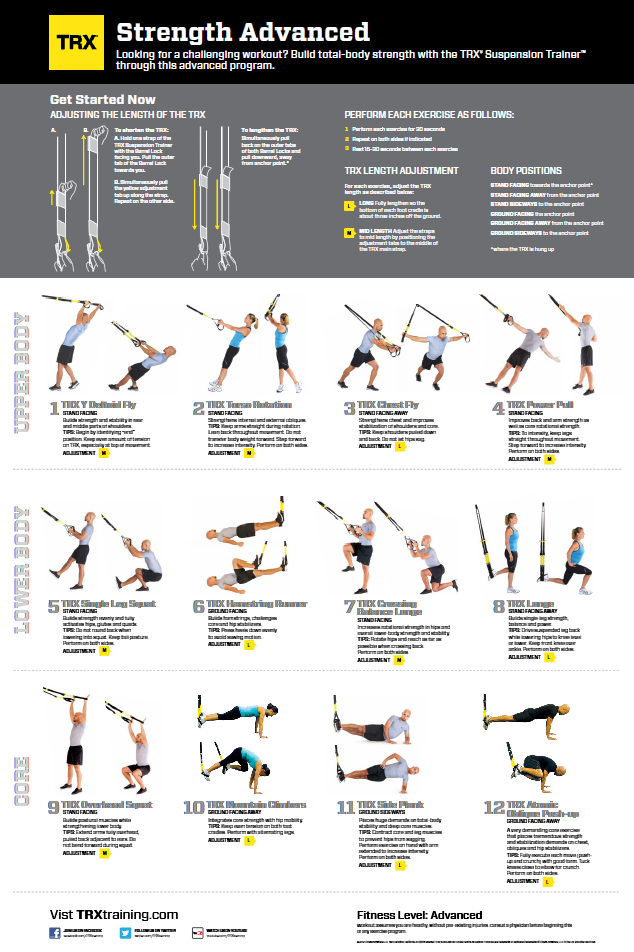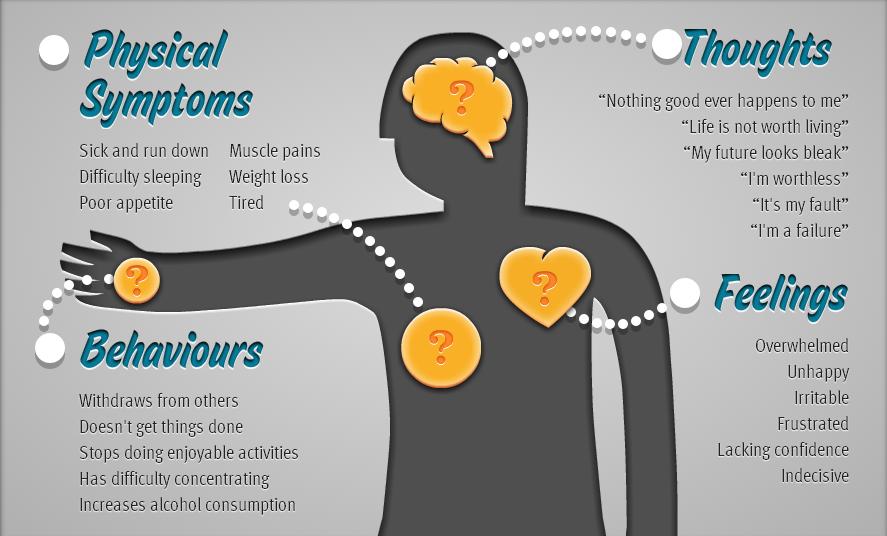Methods of psychology study
5 Most Popular Research Methods in Psychology Experts Use
What are the research methods in psychology? The truth is there are many. But the main types of research methods used in psychology are quantitative and qualitative.
Quantitative research involves using data to:
- Make descriptions
- Predict outcomes
- Test an independent variable
And qualitative research uses qualitative data collection from:
- Speech
- Text
- Video
You use this quantitative and qualitative data to understand and interpret phenomena. This includes social or individual behaviors and beliefs. It can also mean conducting interviews or surveys.
In other words, quantitative research deals with numbers. And qualitative research relies on descriptions. Both have their strengths and limitations. But some groups believe quantitative research is better.
In psychology qualitative research is important. Quantitative measures lack nuance. They can’t measure the entire human experience. So, it’s important to note that both psychology research methods are crucial. You shouldn’t have one without the other!
But now, let’s get down to specifics. The two main types of research methods used in psychology are distinct research methods. Read on to discover the five most popular types of psychological research.
Case Study
Case study research methodology is a kind of qualitative method. Case studies include deep inquiry into:
- Communities
- Events
- Groups
- Individuals
They use a multi-method approach. This data collection method combines interviews and observations. Also, psychology case studies tend to focus on specific people.
First, they will collect biographical information from participants. Then, they will record important events in the participants’ lives. This research method discovers any maladaptive behaviors or beliefs in the participants.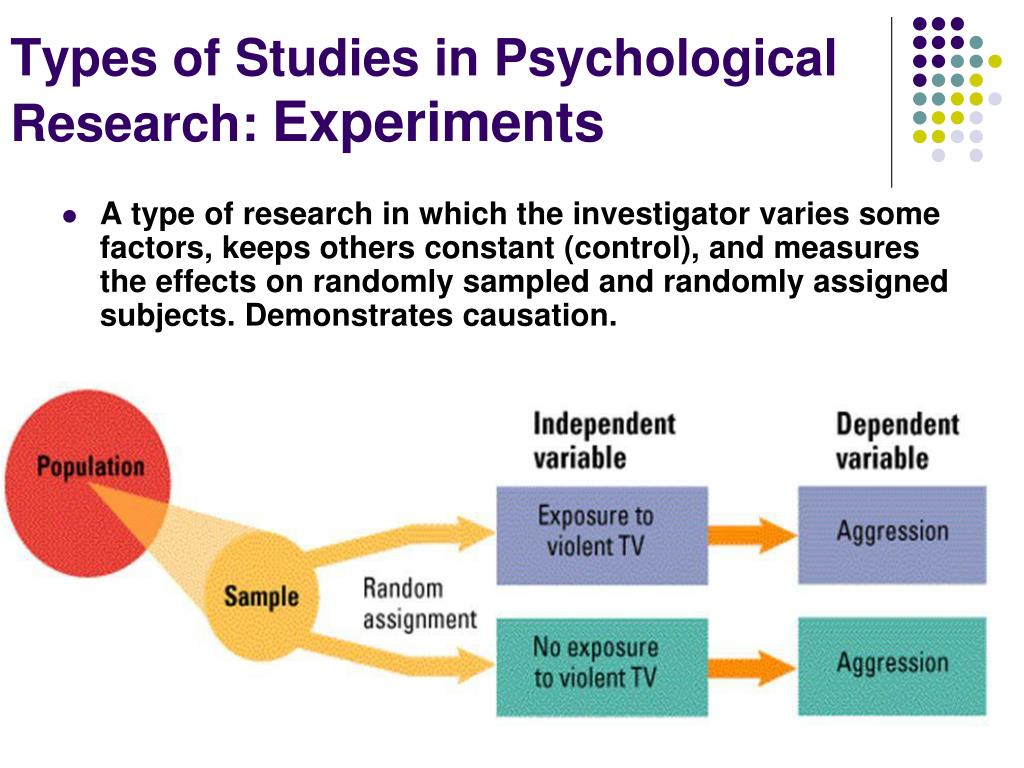
One notable case study practitioner is Sigmund Freud. He used case studies to:
- Assist patients with psychological ailments
- Diagnose patients
- Understand problems
But it’s important to note that Freud didn’t get everything right. Modern psychologists debunked much of his work. For instance, Freud’s theory of psychosexual development has no credibility. But he remains a well-known psychologist who used case studies as a research method.
How to Use Case Study Research Method
You conduct case studies by interviewing patients and observing them. You then describe the patient’s behavior. And you discuss events from the patient’s perspective.
The interviews should be casual. You want the person to feel relaxed. Casual relationships yield the best outcomes. And your observations come from watching the person in their everyday life.
Casual relationships are not causal relationships. The two have different meanings. A causal relationship exists when one variable has direct influence on another variable. Your future research depends on these variables. But in case study, your data sources include:
Your future research depends on these variables. But in case study, your data sources include:
- Journals
- Notes
- Photos
They do not include structured observation or data collected from research designs. You then check your data to find common interpretations.
Content Analysis
This psychology methodology includes text-based data. You use this data to identify meanings and themes. It can be both quantitative and qualitative.
For example, quantitative researchers can search for specific phrases. Then, they can add them for a final count. In this way, they turn the text into numerical data.
Qualitative context analysis searches for the meaning of texts. You do this by identifying themes in the data. This means coding and categorizing the text to understand it. Also, researchers use a technique called close reading.
Close Reading
Through the close reading research method, you turn text into coded units. This requires you to read the text many times.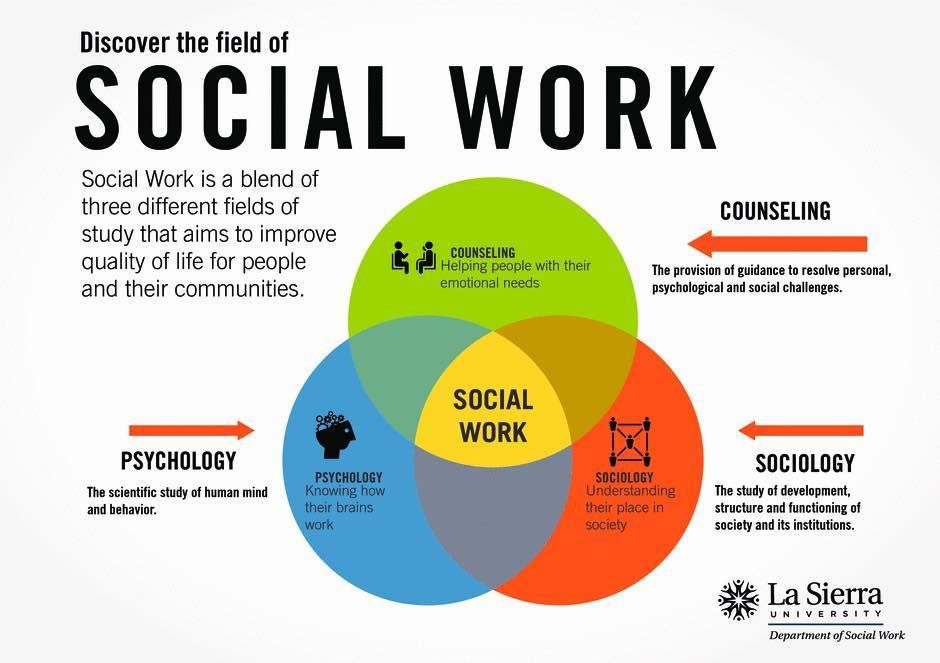 You read it until you reach data saturation. This means all the text must become code.
You read it until you reach data saturation. This means all the text must become code.
Close reading is inductive analysis. This is because you don’t test theories with close reading. Rather, you code the data to see if a theory emerges. This process is also known as conventional or formative analysis.
There is also directed analysis. It’s like formative analysis, but not the same. A directed approach is deductive. From the start, the researcher begins with a hypothesis. Then, they create coding units from there.
Next, you search for those types of code in the text. It’s like running the data through a filter. And the research and hypotheses are the filter. This is what we mean by thematic content analysis.
Summative Analysis
Once you finish the thematic analysis, you do a summative analysis. Here, you compare themes across different texts. Summative analysis is both quantitative and qualitative. It depends on how you use it.
It’s quantitative if you transform text to numbers.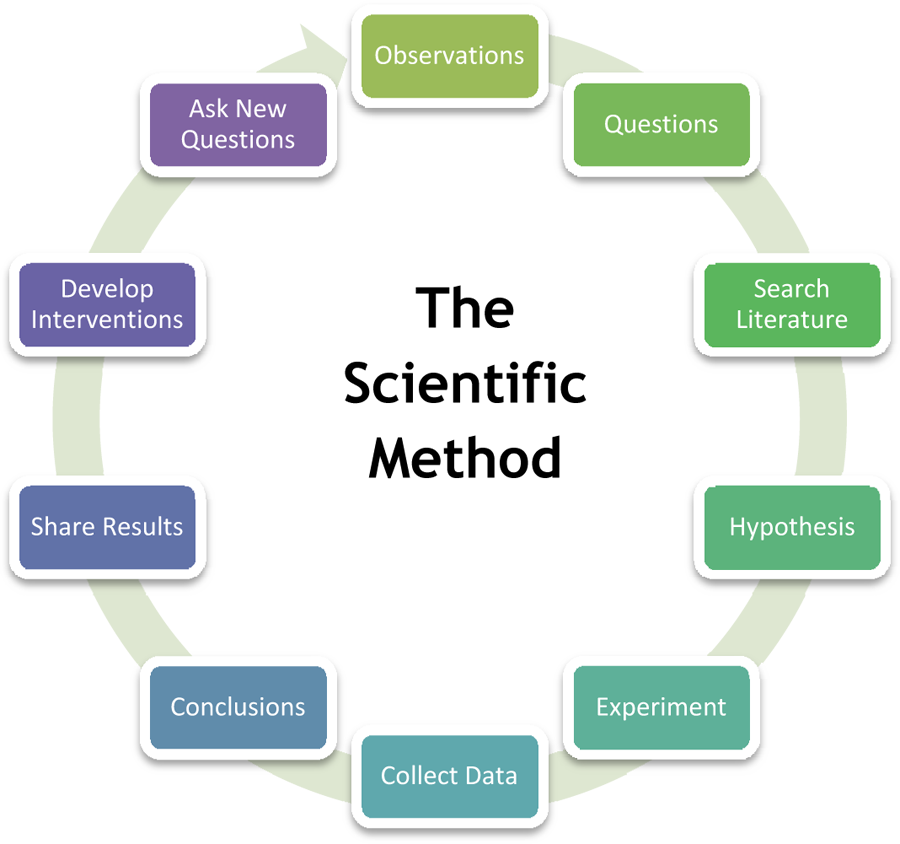 For instance, you might tally the total occurrences of certain phrases.
For instance, you might tally the total occurrences of certain phrases.
Researchers may also perform qualitative analysis. In this way, they search for meaning in the text. To do this, they might look at specific contexts while analyzing.
Ground Theory
Another methodology in psychology is the ground theory. Ground theory is an inductive style of analysis. In that way, it’s like summative analysis. And it’s popular among the types of research psychology experts use.
You use ground theory for theory development. And this method has been around for 50 years. Unlike summative analysis, ground theory is never quantitative. But it is deductive in nature. You use it to establish hypotheses through data collection and analysis.
Ground theory research is an involved process. Investigators must analyze literature and existing data. This will shape their current psychological research.
Also, during this phase, you might discover interesting things. That includes finding unique perspectives and alternate answers to your questions.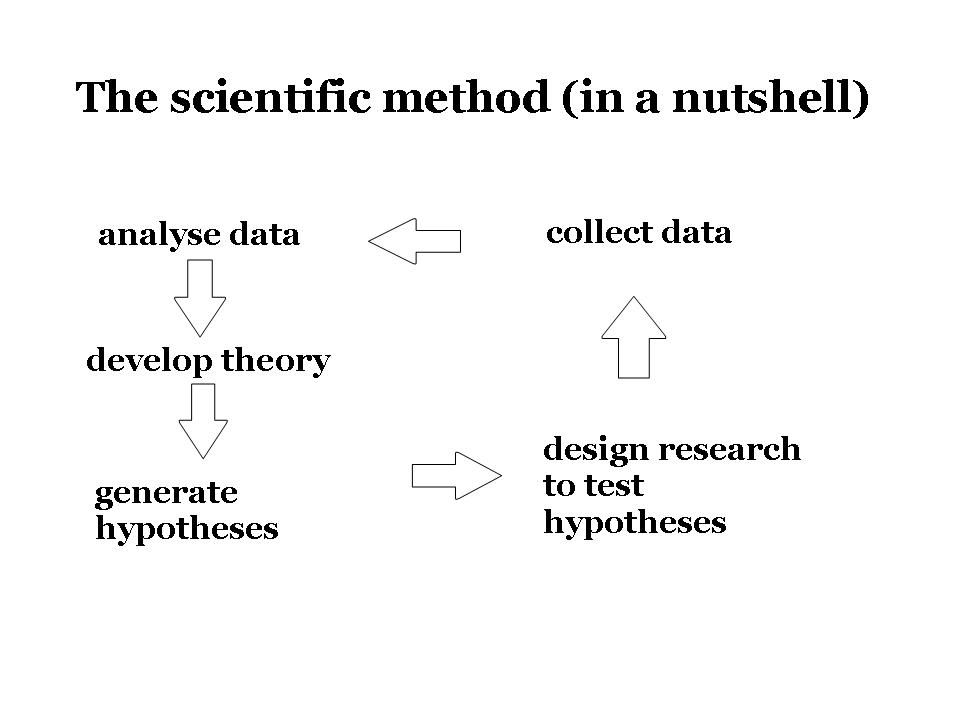
Like others in this category, ground theory happens during content analysis. It involves critical reviews of actors’ responses to codes or themes. This might take the form of a survey or interview. But whatever it is, it must follow specific stages.
Stages in Ground Theory
- Code
- Categories
- Concepts
- Theory
Coding
Coding is a tedious process. It places text into categories. It does this through line-by-line analysis. It names concepts and categories, then repeats the process.
Experts call this open coding in psychological research. And it allows you to gather the important bits of the quantitative data.
Categorizing
We’ve now established the codes. What next? The answer is organization. Researchers must put similar codes into groups.
Conceptualizing
Then, you must find meaning in these categories. The groups will help you generate a theory. To do this, you construct the categories around a central idea.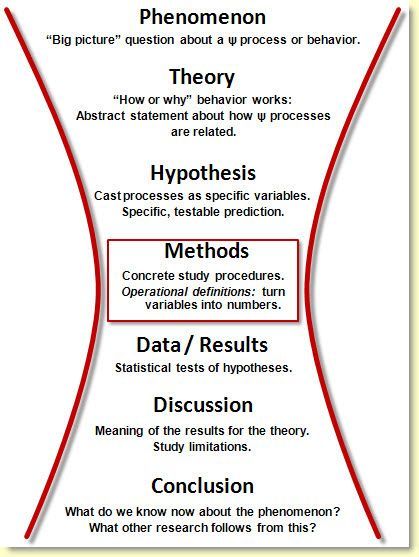 This idea ties the concepts together.
This idea ties the concepts together.
Theorizing
Theorizing occurs in every step. But you use it most at the end of your research. The final step includes analyzing your work. This will lead to the development of a theory.
Experiment
There are many types of experiments in psychology. This is a broad kind of research. And it can be part of many other research methods in psychology.
We use the term “experiment” to describe a specific procedure. In science, experiments are a popular method of research.
There are many components of an experimental design:
- Consistency
- Control group
- Control of variables
- Showing cause and effect
Consistency of measurements is crucial. If you use different standards, replication becomes impossible. And the results are unreliable.
The control group is a person or group of people who researchers don’t manipulate. They serve as the base of the experiment. You compare all other groups to the control group.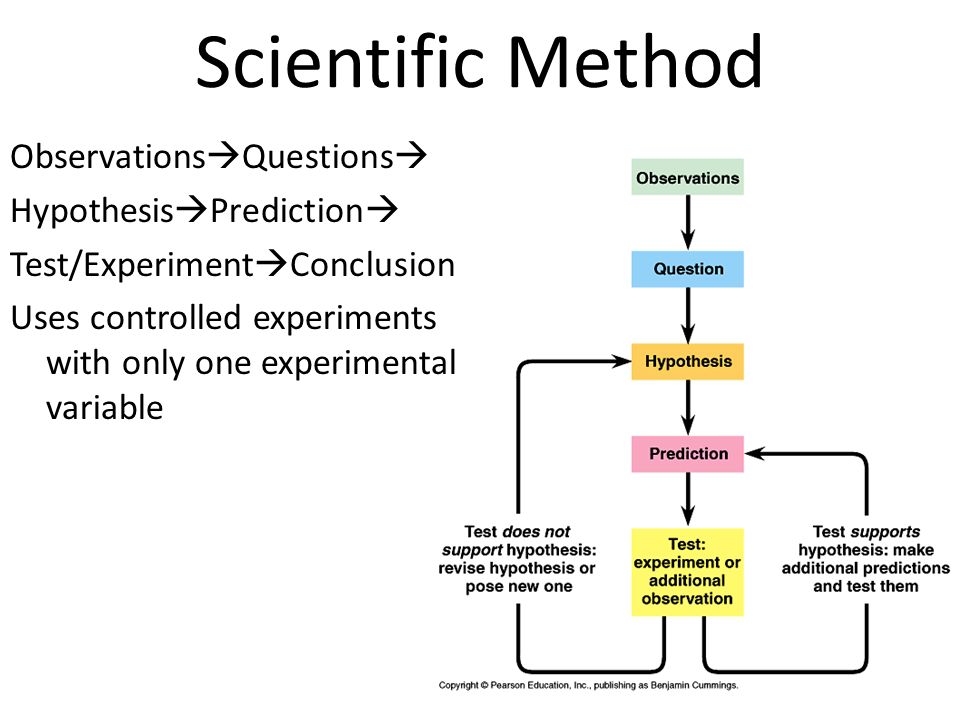
Next, you must control your variables. The experiment should not have any unnecessary data. This allows psychologists to repeat the experiment. Like consistency, control makes your experiment reliable.
The fourth principle is cause and effect. You must prove your experiment caused your results. In other words, nothing else led to your results. Your manipulations alone should be the cause of the effect.
You can apply these principles to all experiments.
3 Main Types of Experiments
- Field experiments
- Lab experiments
- Natural experiments
Lab experiments occur in controlled settings. They can take place in a scientific lab. But this is not a strict rule. Examples of lab experiments include:
- Human behavior studies
- Human development
- Sleep studies
Lab experiments have many strengths. They are easy to control and replicate. This makes them reliable. But they are not perfect.
Lab experiments lack natural settings. And the artificial setting can cause unnatural reactions. It might also cause psychological research bias.
And the artificial setting can cause unnatural reactions. It might also cause psychological research bias.
Observational Study
There are many types of studies in psychology. Observational studies are one type, and they’re qualitative. You can perform them in many ways. And this includes non-experimental means, too.
The main part of observational studies is (you guessed it) observing! In psychology, you observe behavior. The goal is to discover variables that affect behaviors in:
- Groups
- Individuals
- Social constructs
The psychological research is non-experimental because it happens in natural settings. This means there are no controls in the experimental research.
Observational research involves mixed methods. Mixed methods include qualitative data and quantitative techniques.
Naturalistic observation happens in the participant’s natural environment. For example, psychologists study mental health in the penal system. They observe people in jails and prisons for their research method.
They observe people in jails and prisons for their research method.
In some cases, the observation might happen in secret. This means the participant is unaware of the research. We call this disguised naturalistic observation. But be careful and remain ethical!
To perform disguised research using research ethics, you follow the guidance below.
Guidelines to Follow for Observational Study
- Individuals must remain anonymous
- Observations must happen in public contexts
- You must not expect private observations
But sometimes disguised observations aren’t possible. In this case, stick to undisguised research methods in psychology. They are effective, too. But undisguised studies do have their drawbacks.
Undisguised naturalistic observation can cause reactivity. Psychologists say reactivity occurs when patients are aware of the study. This causes their behavior to change and obscures the data. So, you might ask, how do you avoid this?
You can cut reactivity by conducting longer studies. Think of reality TV shows. The participants start on their best behaviors. Then, they grow accustomed to the cameras. And their behavior becomes more natural.
Think of reality TV shows. The participants start on their best behaviors. Then, they grow accustomed to the cameras. And their behavior becomes more natural.
Participant observation is different for naturalistic studies. The goals are the same. But the researcher will engage with the participants. This is because you can’t collect some data without the researcher’s influence.
Participant observation also includes a disguised method. For example, psychologists have infiltrated extremist groups before. They do this to study extremist people and collect data. And to succeed, they must go undercover.
One of the main benefits of disguise is the researcher’s position. Undercover researchers are in the perfect place for experimenting. They can further understand the people by living amongst them.
But there are criticisms of this method. One is that active researchers might impact group dynamics. Also, the researcher could develop relationships with participants. This would lead to biases in the study.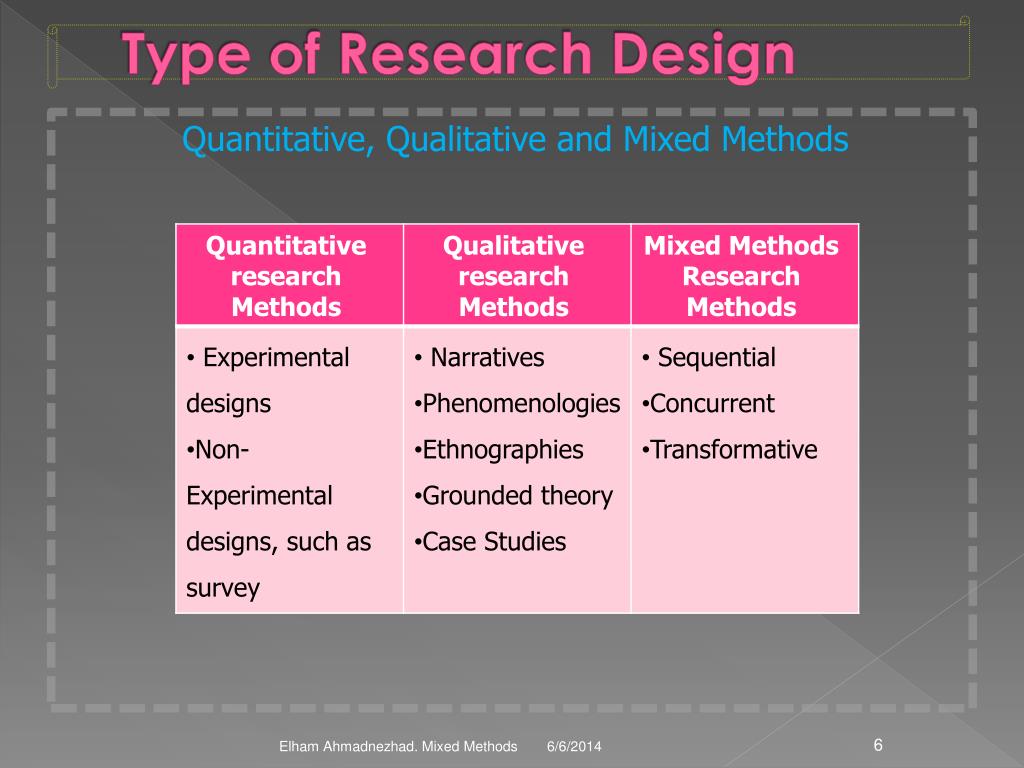
Survey Method
Now for the last of the types of research methods in psychology. The survey research method. This research method can be qualitative research or quantitative research. And scientists of all types use it, not only psychologists.
In this study, researchers send participants surveys. This is a series of questions that ask for participants’ self-reported:
- Actions
- Feelings
- Thoughts
Surveys measure how certain variables impact them.
The most important aspect of surveys is the sampling method. Most researchers prefer large and random samples. They randomly assign participants. This can assure a more accurate representation of their population.
Surveys can vary. They can be long or short. And you can conduct them over many communication channels.
Communication Channels for Survey Data Collection Studies
- In person
- Telephone
- The internet
- Video chat
You can use this data for quantitative or qualitative reasons. Your scientific method depends on the purpose and design of your research.
Your scientific method depends on the purpose and design of your research.
Surveys of all types are popular in social science. They are one of the top research methods in psychology. In general, they document the prevalence of social problems like:
- Gender inequality
- Poverty
- Racism
Healthcare providers also use surveys as a research study. Sure, they seek professional medical advice from experts, but they also use different research designs. As do mental health experts, psychologists, public health professionals, and academics. In healthcare, they measure the prevalence of mental health issues, and they research processes and causes of:
- Anxiety
- Depression
- Substance abuse
Like some qualitative and quantitative methods, survey research study has pros and cons. Its strengths are large data collection and low cost. But it also has the potential for researcher bias and poor sampling.
Other Types of Research Methods Used in Psychology
- Correlational research
- Dependent variable
- Independent variable
- Experimental task design
- Positive correlation (also correlational research)
- Structured observation
- Random sampling in experimental design
- Statistical estimation
Final Thoughts
The above five research methods provide a glance at different psychology research methods.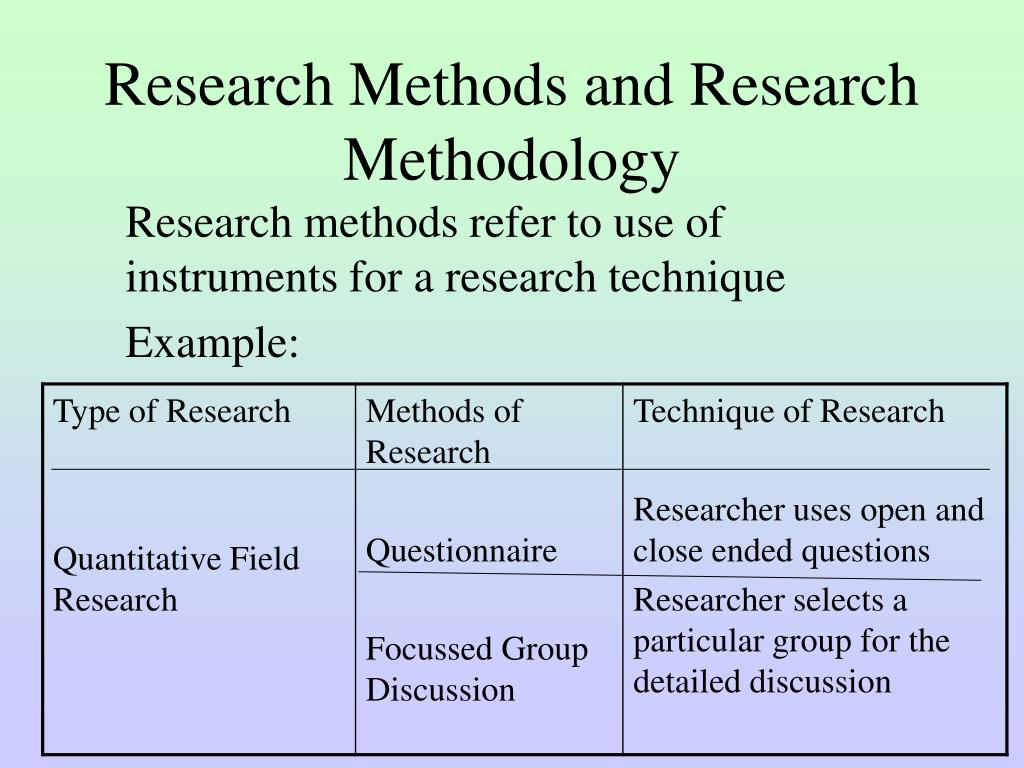 In reality, they are more complicated. They contain more detail in size and scope than presented here. But our overview highlights how different and rigorous research can be.
In reality, they are more complicated. They contain more detail in size and scope than presented here. But our overview highlights how different and rigorous research can be.
There are many other methods not listed here. But most fall into the above five categories.
Research occurs at all levels of academia and other settings. Master’s and Ph.D. students learn research skills while preparing for careers.
And the subjects they study vary. They may research biology, data science, visual media, or literature. Their future research and sampling methods are broad. And you can apply them to all forms of study.
In general, research methods aren’t flawless. But they proved rigorous and robust over time. And they’ve produced great findings in psychology.
All methods attempt to understand the human mind. We wish to know how it functions and impacts behavior. And we have yet to do so. But the above methods will push us closer to that goal.
Related Resources:
5 Career Options with a Bachelor’s in Psychology
5 Careers in Sociology That You Can Feel Good About
30 Best Bachelor’s in Psychology Degrees Online: Small Colleges
Top 10 Best Majors for Indecisive Students
Ultimate Guide to Psychology and Counseling Degrees and Careers
BDP Staff
October 2022
This concludes our article on the various research methods in psychology.
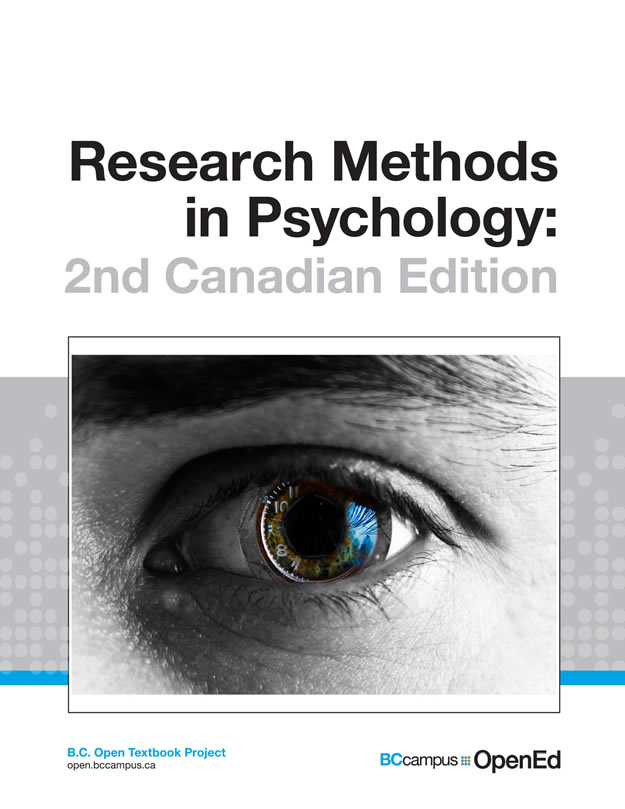
7 Important Methods in Psychology With Examples – StudiousGuy
Psychology is a scientific study of the human mind, mental processes, and behavior. It is called a scientific study because psychologists also do various systematic research and experiments to study and formulate psychological theories like other scientists. Psychological researches involve understanding complex mental processes, human behavior, and collecting different types of data (physiological, psychological, physical, and demographic data), psychologists use various research methods as it is difficult to obtain accurate and reliable results if we use a single research method for collecting research data. The type of method they use depends upon the type of research. Broadly, researches are divide into two types, i.e., experimental and non-experimental researches. Experimental researches involve two or more variables, and it studies the effect of the independent variable on the dependent variable (cause-effect relationship), whereas non-experimental researches do not involve the manipulations of variables.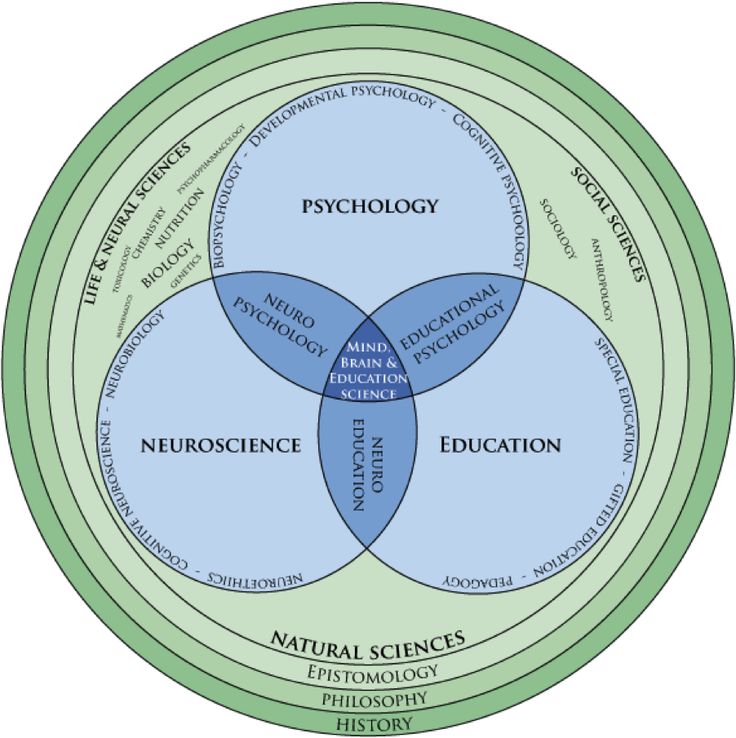 The concept of variables is briefly explained further in this article. Let’s get familiar with some widely used methods of collecting psychology research data.
The concept of variables is briefly explained further in this article. Let’s get familiar with some widely used methods of collecting psychology research data.
Index of Article (Click to Jump)
1. Experimental Method
To understand the experimental method, firstly we need to be familiar with the term ‘variable.’ A variable is an event or stimulus that varies, and its values can be measured. It is to be noted that we can not regard any object as a variable; in fact, the attributes related to that object are called variables. For example, A person is not a variable, but the height of the person is a variable because different people may have different heights. In the experiment method of data collection, we mainly concern with two types of variables, i.e., independent variables and dependent variables. If the value of the variable is manipulated by the researcher to observe its effects, then it is called the independent variable, and the variable that is affected by the change in the independent variable is called the dependent variable. For example, if we want to study the influence of alcohol on the reaction time and driving abilities of the driver, then the amount of alcohol that the driver consumes is the independent variable, and the driving performance of the driver is called the dependent variable. Experimental methods are conducted to establish the relationship between the independent variable (cause) and dependent variables (effect). The experiments are conducted very carefully, and any variables other than the independent variable are kept constant or negligible so that an accurate relationship between the cause and effect can be established. In the above example, other factors like the driver’s stress, anxiety, or mood (extraneous variables) can interfere with the dependent variable (driving ability). It is difficult to avoid these extraneous variables; extraneous variables are the undesired variables that are not studied under the experiments, and their manipulation can alter the results of the study, but we should always try to make them constant or negligible for accurate results.
For example, if we want to study the influence of alcohol on the reaction time and driving abilities of the driver, then the amount of alcohol that the driver consumes is the independent variable, and the driving performance of the driver is called the dependent variable. Experimental methods are conducted to establish the relationship between the independent variable (cause) and dependent variables (effect). The experiments are conducted very carefully, and any variables other than the independent variable are kept constant or negligible so that an accurate relationship between the cause and effect can be established. In the above example, other factors like the driver’s stress, anxiety, or mood (extraneous variables) can interfere with the dependent variable (driving ability). It is difficult to avoid these extraneous variables; extraneous variables are the undesired variables that are not studied under the experiments, and their manipulation can alter the results of the study, but we should always try to make them constant or negligible for accurate results.
Control Group and Experimental Group
Experiments generally consist of several research groups that are broadly categorized into control groups and experimental groups. The group that undergoes the manipulation of the independent variable is called the experimental group, whereas the group that does not undergoes the independent variable manipulation, but its other factors or variables are kept the same as the experimental group, is called a control group. The control group basically acts as a comparison group as it is used to measure the changes caused by the independent variable on the experimental group. For example, if a researcher wants to study that how does the conduction of exams affects the learning ability of the student, then, here, the learning ability of the student is the dependent variable and exams are the independent variable. In this experiment, some lectures will be delivered to the students of the same class and of nearly the same learning abilities (based on their previous exam scores or other criteria), and then the students are divide into different groups, one group is not subjected to give the exams, while the other group has to give the exam of what they have learned in the lesson. The group of students that were not subjected to give the exams is called the control group, and the group of students that were subjected to give the exams is called the experimental group. The number of experimental groups can be more than one based on how often does the exams are conducted for each group. At the end of the experiments, the researcher can find the results by comparing the experimental group with the control group.
The group of students that were not subjected to give the exams is called the control group, and the group of students that were subjected to give the exams is called the experimental group. The number of experimental groups can be more than one based on how often does the exams are conducted for each group. At the end of the experiments, the researcher can find the results by comparing the experimental group with the control group.
Types of Experimental Method
Some major types of the experimental method include,
1. Lab Experiments
It is difficult to conduct some experiments in natural settings as many extraneous variables can become a problem for the research. So, researchers conduct the experiments in a controlled manner in laboratories or research centers. It is easy to manage the independent and dependent variables in the controlled settings. For example, if the researcher wants to study the effect of different kinds of music like pop, classical, etc.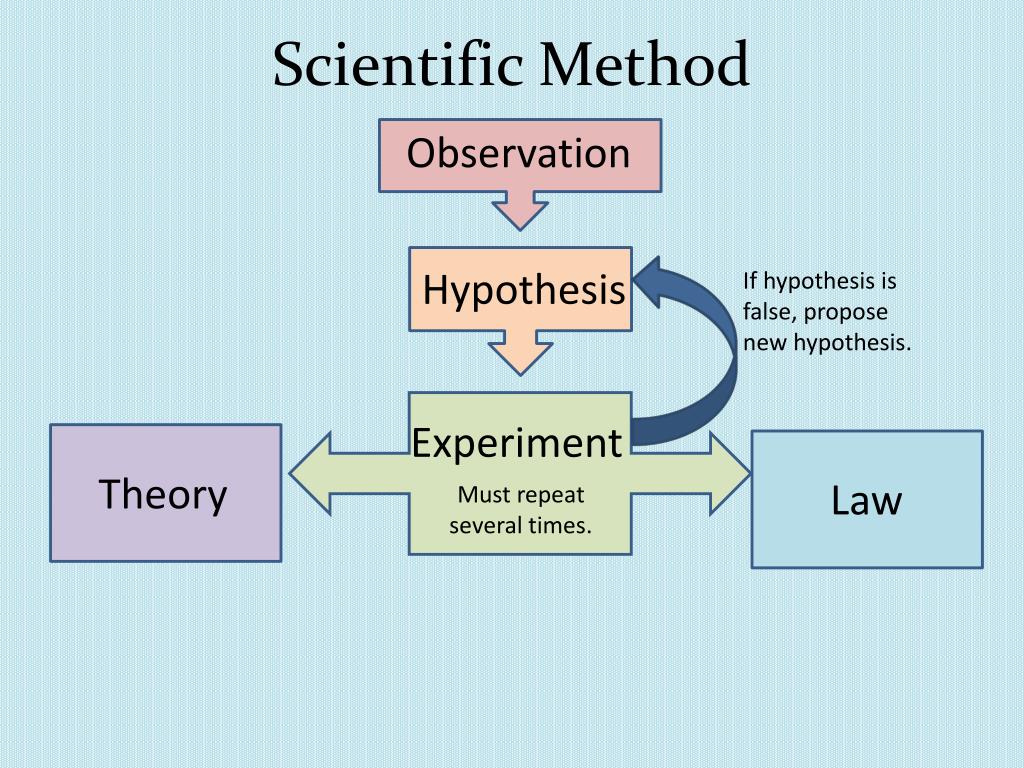 , on the health of the patients, then the researcher will conduct this study in a room rather than in a natural environment as it’s easy to keep extraneous variables constant in the closed settings. Here, music is the independent variable and health is the dependent variable. If the same experiment is conducted outside the lab, then extraneous variables like sunlight, weather, noise, etc., may interfere with the study and manipulate the results of the research.
, on the health of the patients, then the researcher will conduct this study in a room rather than in a natural environment as it’s easy to keep extraneous variables constant in the closed settings. Here, music is the independent variable and health is the dependent variable. If the same experiment is conducted outside the lab, then extraneous variables like sunlight, weather, noise, etc., may interfere with the study and manipulate the results of the research.
2. Field Experiments
Sometimes, lab experiment results face criticism for their lack of generalizability as they are not conducted in real-life settings. Field experiments are conducted in the natural environment and real-life settings like schools, industries, hospitals, etc., so they are more ecologically valid than lab experiments. For example, if we want to study whether classroom learning or open environment learning is the best teaching method for students, the researcher would prefer the field experiment over the lab experiment. However, in field experiments, it is very difficult to control the undesired or extraneous variables, which makes it difficult to establish an accurate cause-effect relationship. Moreover, they consume more time than the lab experiments.
However, in field experiments, it is very difficult to control the undesired or extraneous variables, which makes it difficult to establish an accurate cause-effect relationship. Moreover, they consume more time than the lab experiments.
3. Quasi Experiments
In lab experiments or fields experiments, sometimes, it is difficult to manipulate some variables due to ethical issues or other constraints. Quasi-experiments are conducted in this situation. In quasi-experiments, the researcher studies that how does a single or many independent variables impact the dependent variable but without manipulating the independent variable. For instance, if the researcher wants to study the effect of terrorism or bomb blasts on the children who have lost their families, then it is difficult to create this situation artificially, so researchers use the quasi-experiments approach. Here, the researcher selects the independent variable instead of manipulating it and compare it with the dependent variable. The researchers will take a group of children who have lost their families (experimental group), and the children who suffered the bomb blast but did not lose their families (control group), and by comparing both these groups, the researcher can analyze the effect of terrorism on the children who lost their families.
The researchers will take a group of children who have lost their families (experimental group), and the children who suffered the bomb blast but did not lose their families (control group), and by comparing both these groups, the researcher can analyze the effect of terrorism on the children who lost their families.
2. Observational Method
The observational method is a non-experimental and qualitative research method in which the behavior of the subject under research is observed. An observational method is a great tool for data collection in psychology because the researcher does not require any special types of equipment to collect the research data. We observe several items throughout our day, but psychological researches are different from our daily observations as it involves some important steps such as selection of the area of interest, noting the observations, and analyzing the obtained data. Gathering the data through observation is itself a skill as an observer should be well aware of his actual area of research and he/she should have a clear picture in mind that what qualities or attributes he should observe, and what he should avoid.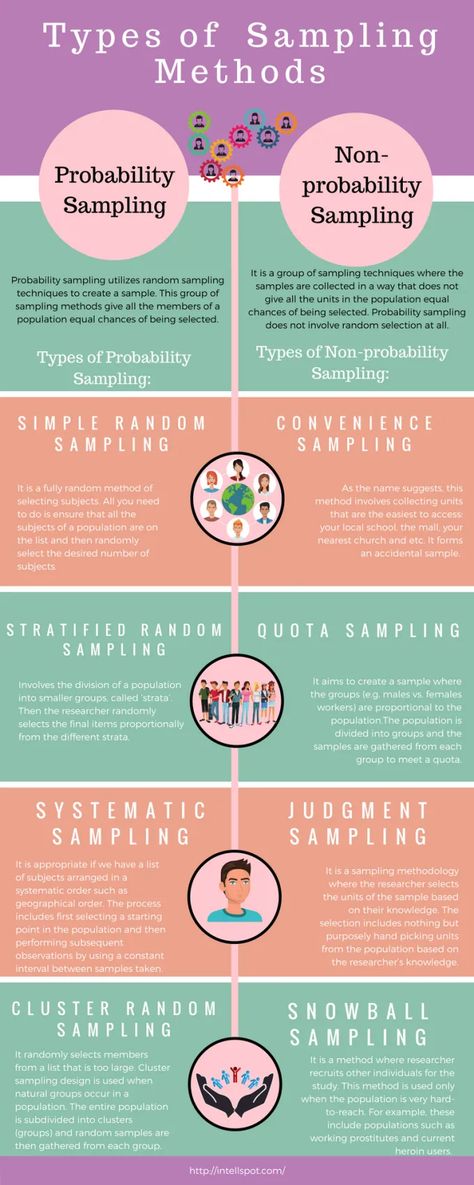 The researcher should have a good understanding of the correct methods of recording and analyzing the gathered data. The major problem of the observational method is the observer’s biases, there are high chances that the observer may judge the event according to his/her biases rather than interpreting the event in its natural form. We can relate it to a famous saying,
The researcher should have a good understanding of the correct methods of recording and analyzing the gathered data. The major problem of the observational method is the observer’s biases, there are high chances that the observer may judge the event according to his/her biases rather than interpreting the event in its natural form. We can relate it to a famous saying,
We see things as we are and not as things are”
So, it is the responsibility of the observer to make accurate observations by minimizing his/her biases.
Types of Observations
The observational methods are broadly categorized into the following types,
1. Naturalistic Observation
If the researcher has made the observations in real-life or natural settings such as schools, institutes, homes, open environments, etc., without interfering with the phenomena under observation, then it is known as naturalistic observation. In this type of observation, the researcher does not manipulate or control any situation, and he/she only records the spontaneous behavior of the subject (individual or event under investigation) in their natural environment. Naturalistic observations provide more generalized results because of the natural settings, but it’s difficult to manage the extraneous variables in natural observations and ethical issues of privacy interference and observer bias are some other major problems of naturalistic observations.
Naturalistic observations provide more generalized results because of the natural settings, but it’s difficult to manage the extraneous variables in natural observations and ethical issues of privacy interference and observer bias are some other major problems of naturalistic observations.
2. Controlled Observation
The observations that are conducted in the closed settings, i.e., their various conditions and variable are highly under control, are known as controlled observations. In these observations, variables are manipulated according to the need of the research. For example, if the researcher wants to study the effect of induced workload on the worker’s performance, the research should be conducted in a controlled setting as the researcher can control the independent variable (workload). However, due to the controlled settings approach, these observations are far less to ecological validity than the naturalistic observations, and the behavior of the participants or subjects that are being studied may change because of their awareness of being observed.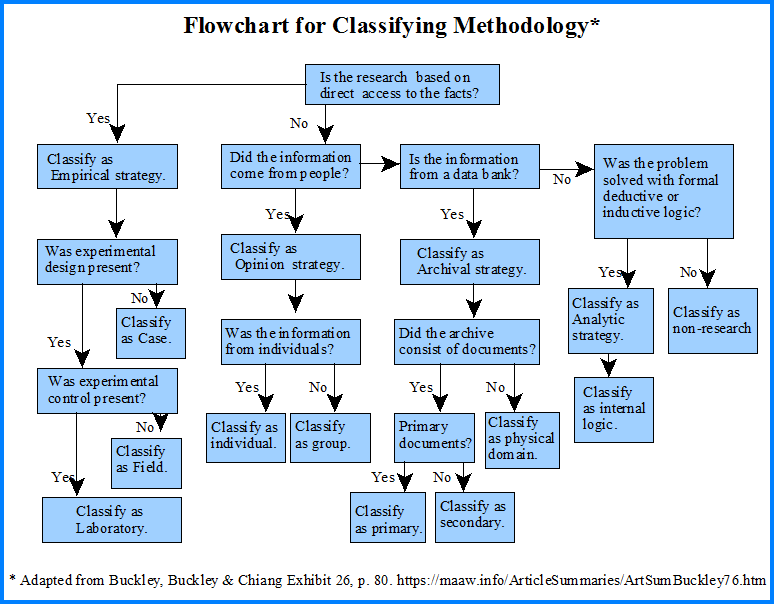
3. Participant Observation
The types of observation in which the observer or the researcher itself becomes part of the research are called participant observations. The other participants in the research may or may not be informed about the presence of the observer in the group. However, if the participants are not aware of the observer’s presence, then the results gathered will be more reliable and satisfy ecological validity. In participant observation as the researcher acts as an active member of the observed group, the observer has to be cautious about the fact that other members of the group won’t recognize him/her, and he/she should maintain the proper relationships and a good rapport with the participants under investigation. The strength of the participant observation is that it provides the researcher a holistic approach to understand the process not only from his/her own perspective but also from the participant’s perspective, which reduces the research biases.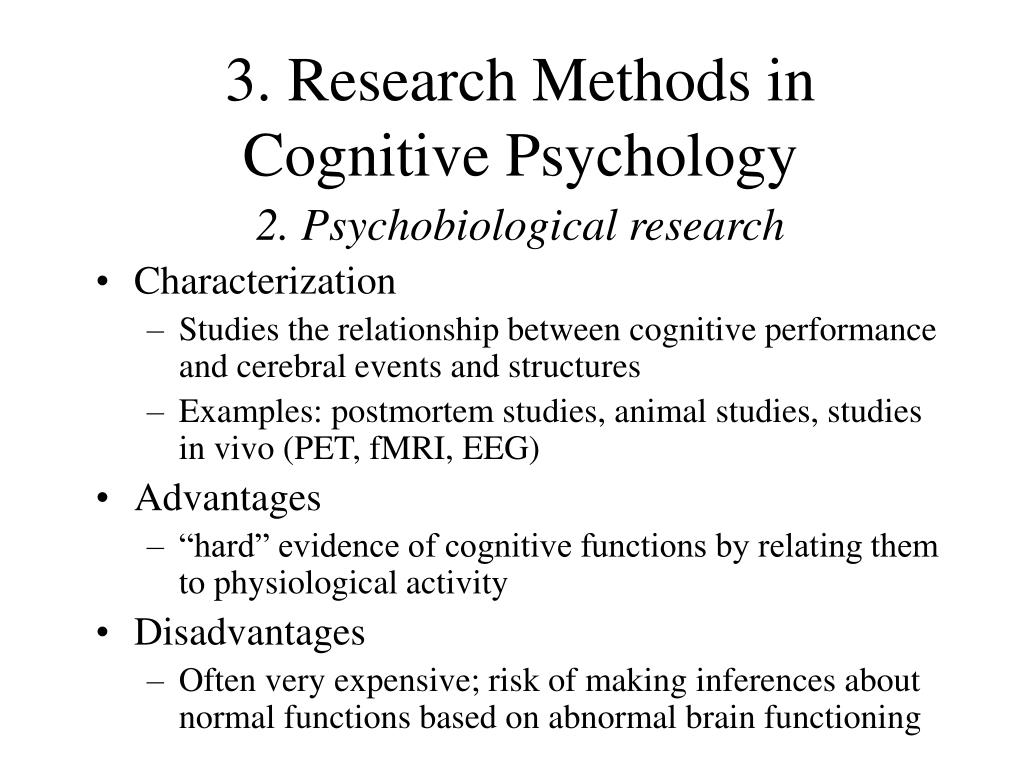 However, Participant observation is time-consuming, and the findings of this type of observation are usually not generalizable because of the small research groups.
However, Participant observation is time-consuming, and the findings of this type of observation are usually not generalizable because of the small research groups.
4. Non-Participant Observation
In this type of research, the observer is not present in the research, but he/she uses other means to observe the spontaneous activities or behavior of the individual or group members, this may include installing the camera in the rooms that need to be observed. The main benefit of non-participants’ observation is that the actual behavior of the participants can be observed without making them aware of being under observation. An example of non-participation observation is a school principal who observes the classroom activities of the teacher and students through the CCTV cameras in his/her office.
3. Case Study
In the case study method, the researcher does qualitative research and in-depth analysis of a specific case (subject under investigation). The results obtained from this method are highly reliable; in fact, many famous theories such as the psychoanalytic theory of Sigmund Freud and Jean Piaget’s cognitive development theory are the results of well-structured and proper case studies of the subjects.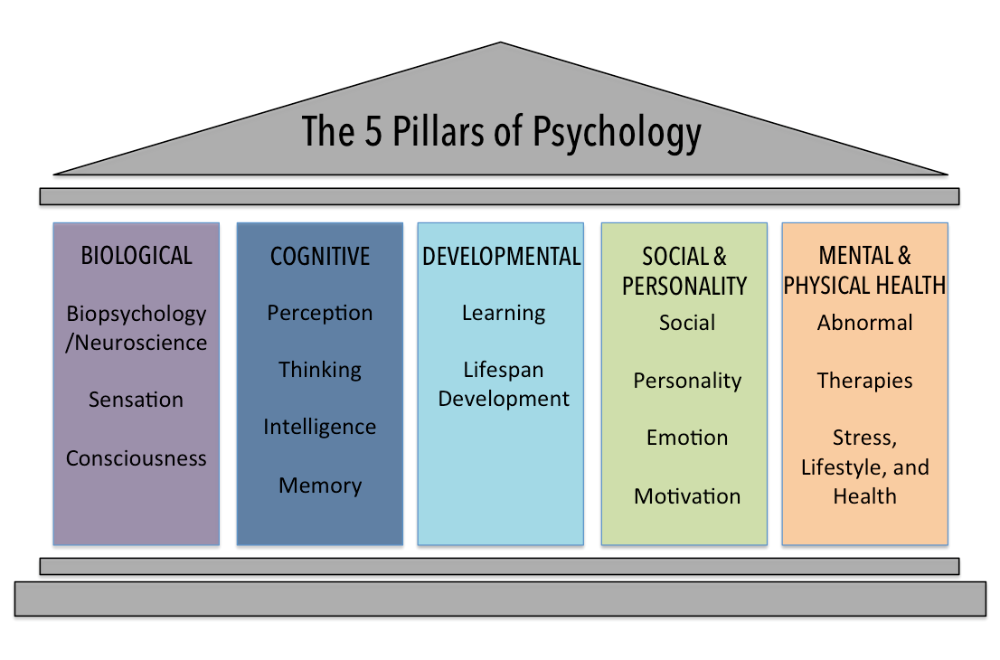 The case study method allows the researcher to deeply study the psyche of the cases. The researcher does the case studies of the people or events that provide some critical information about the new or less discovered phenomena of the human mind. The number of cases can be one or more, or they are of different or same characteristics, for example, a patient suffering from a mental disorder, a group of people belonging to the same gender, class, or ethnicity, and effect on the people of various natural or man-made disasters such as flood, tsunami, terrorism, and industrialization. Case studies involve the multi-method approach as it uses various other research methods like unstructured interviews, psychological testings, and observations to get detailed information about the subjects. It is the best method to deeply understand and analyze the impact of certain traumatic events on the psychological health of the individual, and it is widely used by clinical psychologists to diagnose various psychological disorders of the patients.
The case study method allows the researcher to deeply study the psyche of the cases. The researcher does the case studies of the people or events that provide some critical information about the new or less discovered phenomena of the human mind. The number of cases can be one or more, or they are of different or same characteristics, for example, a patient suffering from a mental disorder, a group of people belonging to the same gender, class, or ethnicity, and effect on the people of various natural or man-made disasters such as flood, tsunami, terrorism, and industrialization. Case studies involve the multi-method approach as it uses various other research methods like unstructured interviews, psychological testings, and observations to get detailed information about the subjects. It is the best method to deeply understand and analyze the impact of certain traumatic events on the psychological health of the individual, and it is widely used by clinical psychologists to diagnose various psychological disorders of the patients.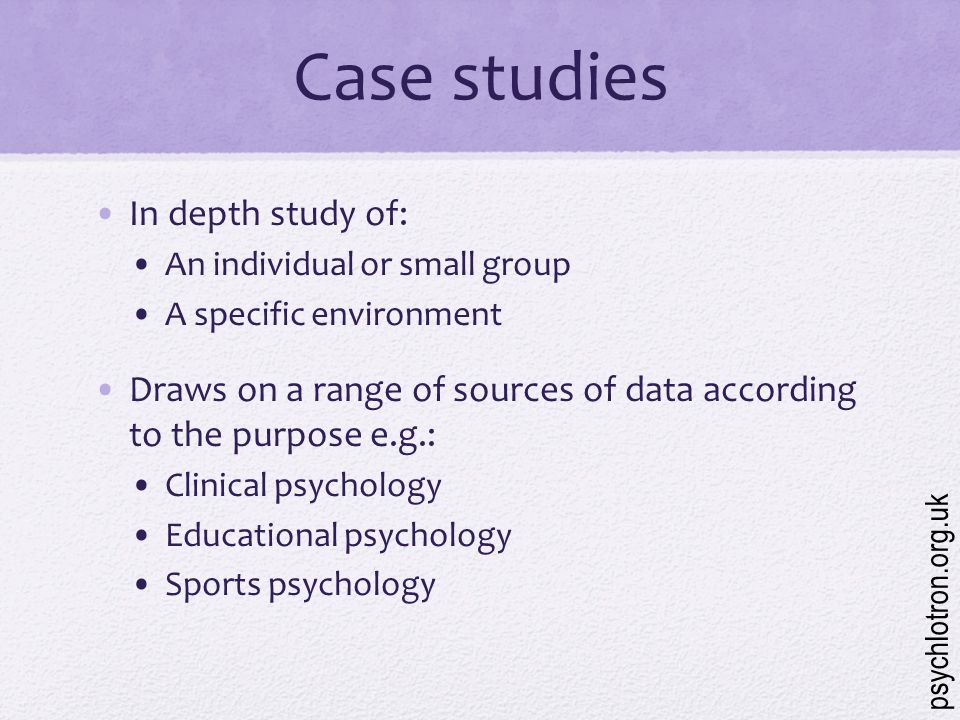
4. Correlational Research
The researcher uses the correlational method if he/she wants to examine the relationship between the two variables. It is to be noted that here researcher does not vary the independent variable as he is only concerned about whether the two variables are linked to each other or not. For example, if you are interested in finding the relation between yoga and the psychological health of the person, then you simply try to find the relationship between these two factors rather than manipulating anything. The degree of the association between the variables is represented by the correlational coefficients ranges from +1.0 to -1.0. The correlation can be of three types, i.e., positive correlation, negative correlation, or zero correlation. If we increase or decrease the value of one variable, the value of another variable also increases or decreases respectively, then it is called a positive correlation, and the value of the correlation coefficient would be near +1.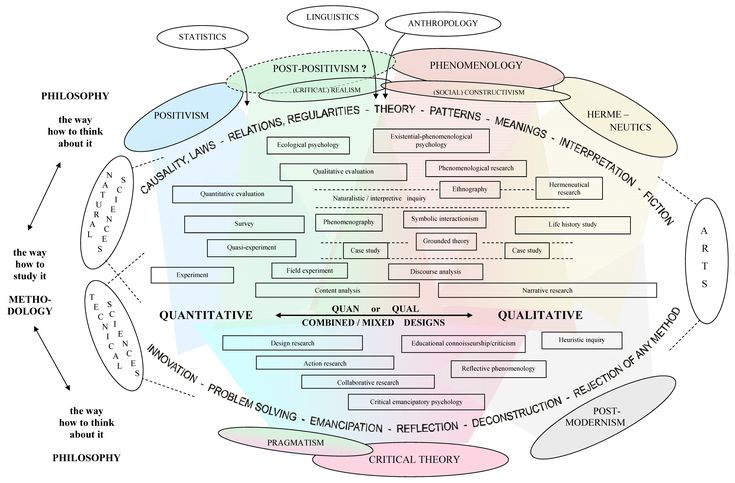 0. If we increase or decrease the value of one variable, the value of another variable decreases or increases respectively, then it is called the negative correlation, and the value of correlational coefficient would be near -1.0, and if the changes in the value of one variable do not affect the other variable, then there does not exist any relationship between the variables, and it is called zero correlation with the correlation value near or equal to zero.
0. If we increase or decrease the value of one variable, the value of another variable decreases or increases respectively, then it is called the negative correlation, and the value of correlational coefficient would be near -1.0, and if the changes in the value of one variable do not affect the other variable, then there does not exist any relationship between the variables, and it is called zero correlation with the correlation value near or equal to zero.
5. Content Analysis
In content analysis research methods, the researcher analyses and quantifies various types of content pieces such as articles, texts, interviews, researches, and other important documents to get useful information about their area of research. Content analyses involve various steps that are data collection, examining the research data, and getting familiar with it, developing ṭhe set of rules for selecting coding units, making coding units (coding unit is the smallest parts of the content that is analyzed) as per the developed rules, and then, finally, analyzing the findings and drawing conclusions.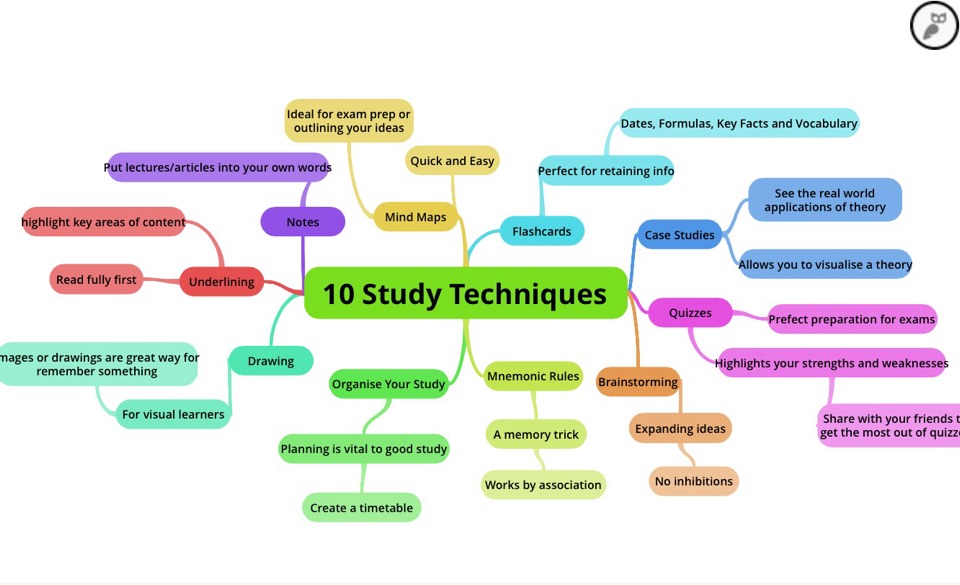 Content analysis is generally of two types, i.e., conceptual analysis, and relational analysis. These are briefly discussed below.
Content analysis is generally of two types, i.e., conceptual analysis, and relational analysis. These are briefly discussed below.
Conceptual Analyses
It involves the selection of the concept (word, phrase, sentence), and then examining the occurrence of the selected concept in the available research data. In conceptual analyses, the researcher selects the sample according to the research question and divides the content into different categories, which makes it easier to focus on the specific data that gives useful information about the research, and then coding and analyzing the results.
Relational Analyses
The initial steps of the relational analyses are the same as the conceptual analyses like selecting the concept, but it’s different from the conceptual analyses because it involves finding the associations or relationships among the concepts. In conceptual analyses, we analyze every concept, but in relational analyses, the individual concepts do not have any importance, instead, the useful information is assessed by finding the associations among the concepts present in the research data.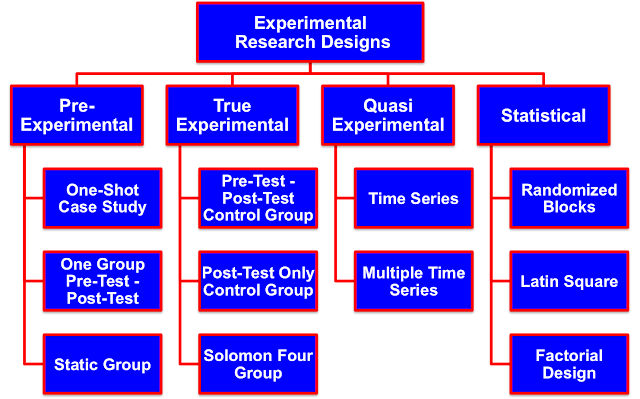
6. Survey Research Method
Survey research is the most popular mean of data collection in almost every branch of social sciences. It finds its applications in election poll results (election surveys), literacy rate, and population rate analysis. The survey research methods help the researchers understand the actual ground reality of the event by analyzing the social views, attitudes, behavior, and opinions of the people. The researchers use various techniques of survey research methods, which are briefly discussed below.
1. Direct Interviews
An interview process involves direct communication between the interviewer/researcher (who asks the question) and the interviewee/respondent (who answers the questions). Interviews give better in-depth results than any other technique of data collection as the researcher gets first-hand information about the respondent’s mind through communication and observation of his/her behavior. Interviews may be structured or unstructured, when the researcher prepares the sequential list of the questions about when and what questions to be asked in the interview, it is called a structured interview, whereas if the questions to be asked in the interview are not pre-planned, and flexibility is provided to the interviewer to ask questions according to the situation, then it is called the unstructured interview. The responses to the questions in the case of structured interviews are also specified to some extent, such questions are called close-ended questions, while in the case of unstructured interviews, the respondent is free to answer the questions according to his/her desire, and these types of questions are called open-ended questions. For instance, if you ask the respondent whether he/she likes the coffee, then the answer would be either yes or no, i.e., a close-ended question. However, if you ask the respondents about their hobbies, then the respondent will answer it according to his/her will, hence it is an open-ended question. An interview can be of the following types, depending upon the number of interviewers and interviewees involved in the interview. For example,
The responses to the questions in the case of structured interviews are also specified to some extent, such questions are called close-ended questions, while in the case of unstructured interviews, the respondent is free to answer the questions according to his/her desire, and these types of questions are called open-ended questions. For instance, if you ask the respondent whether he/she likes the coffee, then the answer would be either yes or no, i.e., a close-ended question. However, if you ask the respondents about their hobbies, then the respondent will answer it according to his/her will, hence it is an open-ended question. An interview can be of the following types, depending upon the number of interviewers and interviewees involved in the interview. For example,
- One to One Interview: When only the interviewer and one interviewee are present in the interview process.
- Individual to group Interview: When one interviewer interviews a group of people.
- Group to Individual: It is also called group panel interview, in this case, an individual is interviewed by a group of interviewers.
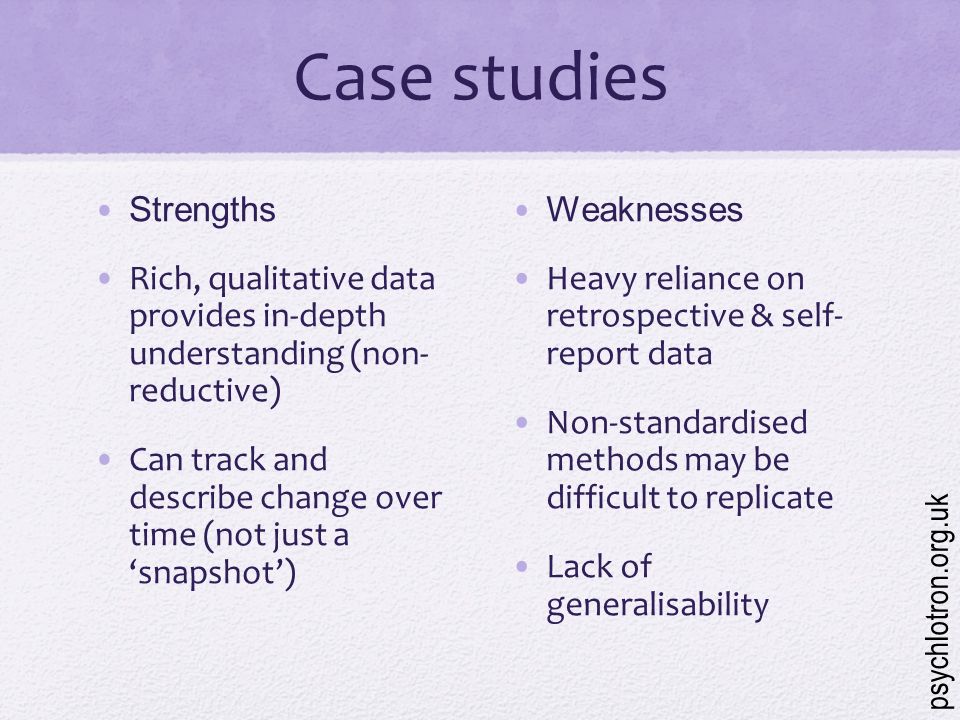
- Group to Group: When a group of interviewers, interviews a group of interviewees.
The most important thing in direct interviews is that the researcher/interviewer should have good interviewing skills, and the ability to build a good rapport with the respondent and making him/her comfortable enough to give accurate answers to the questions asked. The main purpose of conducting an interview is to gather the data about the subject, but the interviewer should be sensitive to the emotions and behavior of the respondent and should not pressurize him/her to give the answers to which he/she is not comfortable enough. The process of the interview is very time-consuming, so it is not much effective as in psychology researches, it would become tedious to take interviews of a large section of society, which is why it is usually preferred for some specific population that may include illiterate or blind people as the interviewer can verbally ask them questions and make sure that whether they understood the questions or not.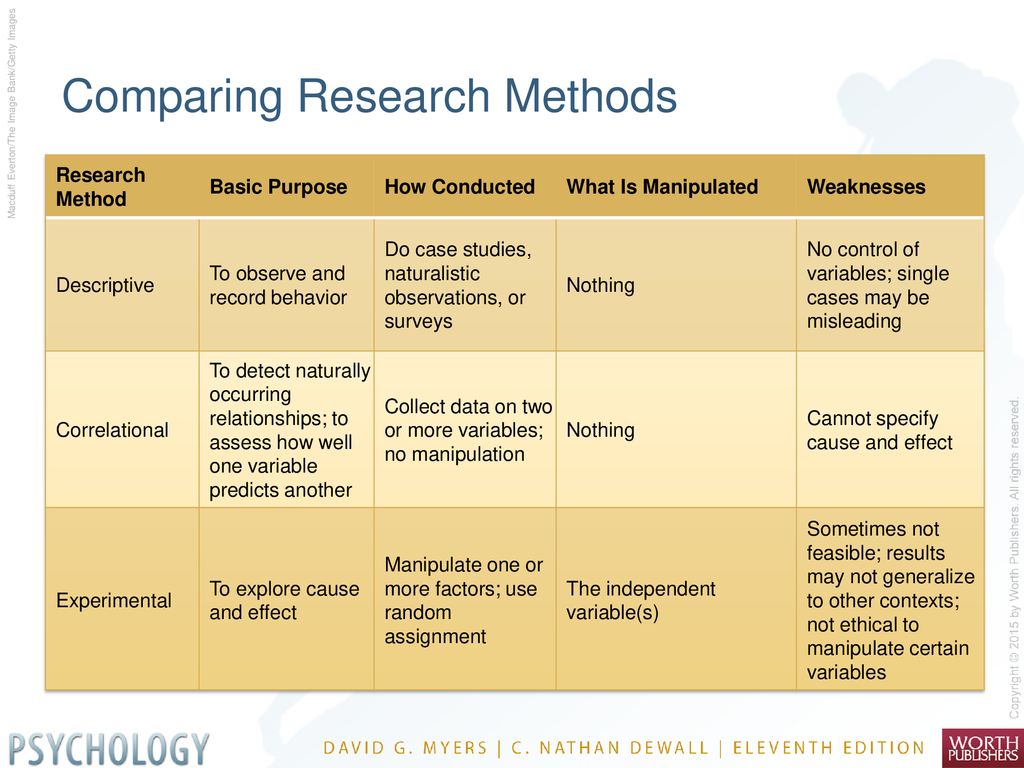
2. Telephonic or Digital Surveys
Telephonic surveys involve asking questions about the survey through direct calls or messages. Digital surveys through ‘Google forms’ are also commonly used these days. Telephone and digital surveys are easy to conduct, and they do not consume much time. However, they have many limitations such as the results obtained through them are not much reliable because in this method the researcher does not have proper evidence of certain factors like respondents’ age, gender, and qualifications, etc., and the respondents may have given the manipulative or vague answers.
3. Questionnaires
Questionnaires consist of a well-structured set of questions that are distributed to the people to mark or write the answers. The questions can be open-ended or close-ended, depending upon the type of survey. It is one of the most commonly used survey techniques as it is easy to conduct, less time-consuming, and a cost-effective method to collect research information.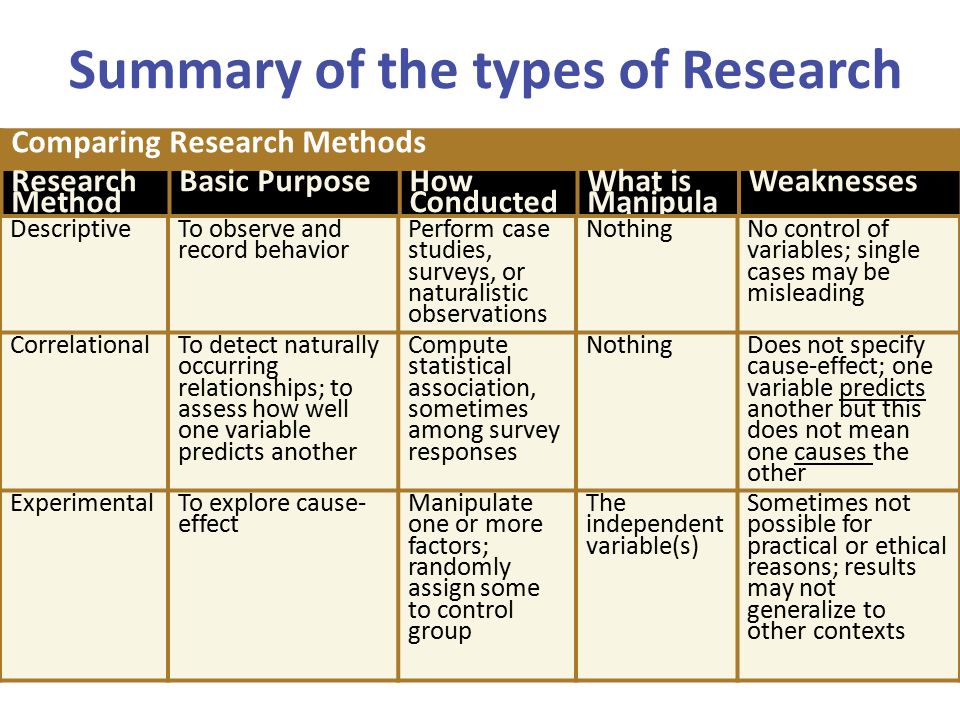 It is a better method than the interview for obtaining accurate answers because, in this method, the proper assurance of confidentiality is provided to the respondent, hence the respondent is more likely to mark the accurate answer. Earlier, only paper-based questionnaires were used, but due to the advancement of technology, digital questionnaires, which are sent to people through emails or google forms, are also used these days.
It is a better method than the interview for obtaining accurate answers because, in this method, the proper assurance of confidentiality is provided to the respondent, hence the respondent is more likely to mark the accurate answer. Earlier, only paper-based questionnaires were used, but due to the advancement of technology, digital questionnaires, which are sent to people through emails or google forms, are also used these days.
7. Psychological Testing
Psychological testing is also known as psychometrics. Psychological tests are scientifically proven and standardized tests that are constructed by psychologists. These are used to assess the various characteristics of humans such as attitude, aptitude, personality, intelligence quotient, and emotional quotient. There are many psychological tests available these days such as aptitude testing, mental health assessment, educational testing, personality assessment, etc., which are used for different purposes. The multiple-choice questions (MCQs) of the psychological tests are carefully designed, and the factors like gender, age, class, qualification, etc.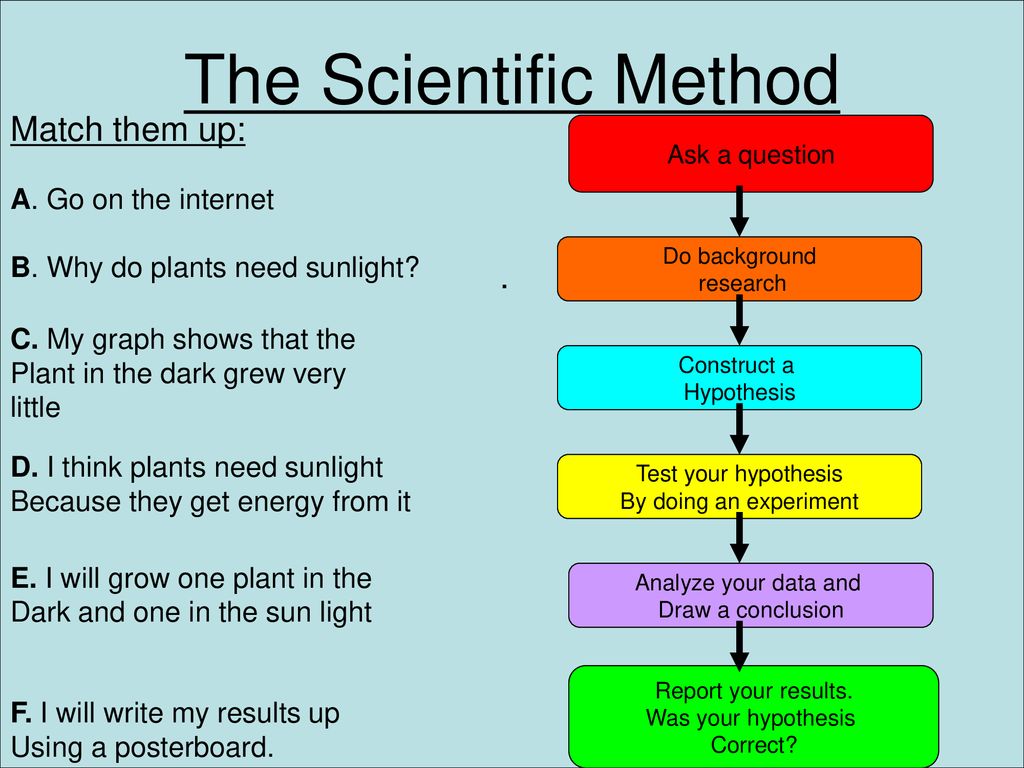 , are considered before conducting these tests. Psychological tests can be conducted offline (pen-paper-based) or online (digital format), depending upon the applicability and availability. The necessary part of the psychological tests is that the participants or the subjects, upon whom the test is conducted, should be properly informed about the testing procedure, and proper instructions about marking or filling the test, time durations of the test, should be verbally provided to them for their better understanding. These tests are constructed by following a systematic approach and three important factors, i.e., validity, reliability, and norms. These are briefly discussed below,
, are considered before conducting these tests. Psychological tests can be conducted offline (pen-paper-based) or online (digital format), depending upon the applicability and availability. The necessary part of the psychological tests is that the participants or the subjects, upon whom the test is conducted, should be properly informed about the testing procedure, and proper instructions about marking or filling the test, time durations of the test, should be verbally provided to them for their better understanding. These tests are constructed by following a systematic approach and three important factors, i.e., validity, reliability, and norms. These are briefly discussed below,
- Validity: The most obvious criterion of constructing the test is that it should be valid. The validity of the test implies that the test should measure what it is designed for. For example, the psychological health assessment test should measure the psychological health of the person rather than the physical health.
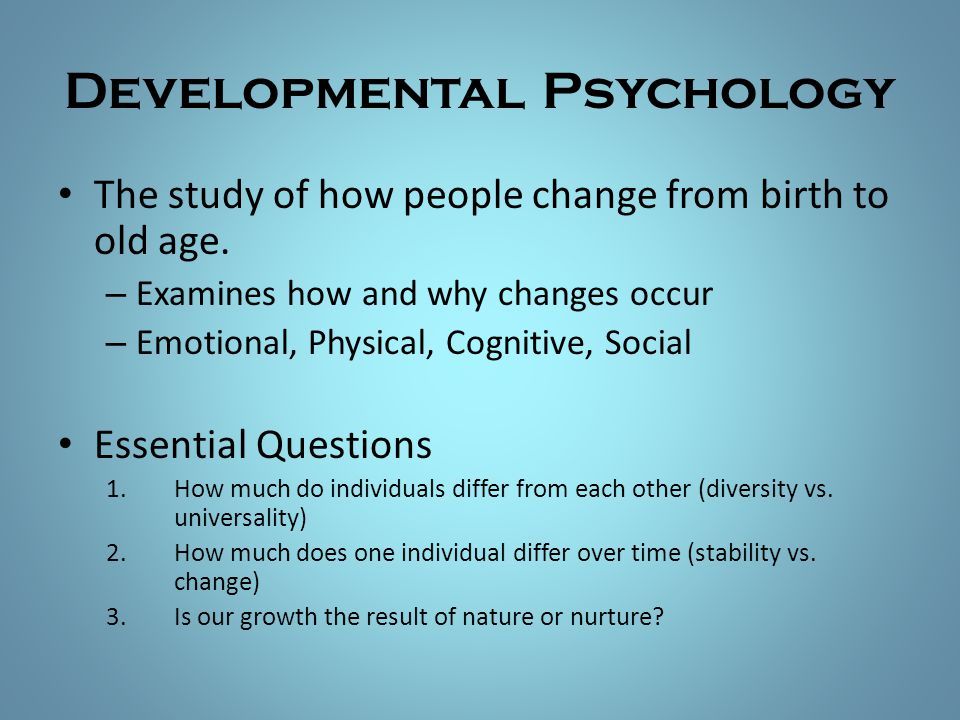
- Reliability: The results obtained by the psychological test should be reliable, i.e., there should be almost negligible variations in test scores if the same test is repeated upon the same subjects after some time.
- Norm: For every psychological test, norms are developed, these are the standard values that represent the average performance of the subject or the group of subjects in the tasks that are provided them. Norms enable psychologists to interpret and compare the results obtained by the psychological tests. There are various types of norms for different types of psychological tests such as descriptive norms, grade norms, age norms, and percentile norms.
Rorschach Psychological Test
Research methods in psychology: classification, characteristics
Psychology, like any other science, has its own research methods. It is they who must be used by students in term papers and dissertations.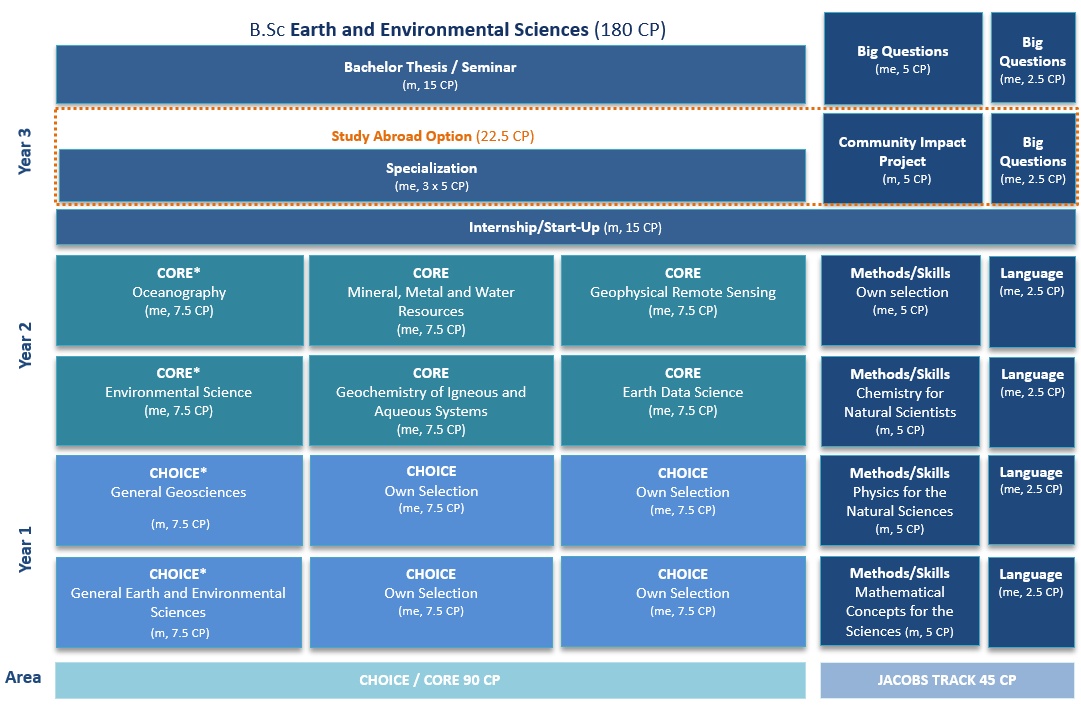
What research methods are used in psychology? We will talk about this in detail in the article. Read on and you will get acquainted with the main research methods in psychology and their characteristics.
Want to be the first to receive useful materials? Don't forget to subscribe to our information channel in Telegram. And stay tuned for current promotions and discounts from the company.
Need help?
Entrust your work to a PhD!
Methods of psychological research: what is it
Before proceeding to the classification of methods of psychological research, let's see what they are and what criteria they must meet.
Methods of psychological research in psychology are methods and means that allow students or scientists to obtain factual data and reliable indicators. And on their basis, put forward theories, look for real evidence and develop effective practical recommendations.
Methods of psychological research must meet the following requirements:
- Objectivity - this means that the methods used in the study of mental phenomena must take into account the objective nature of the human psyche.
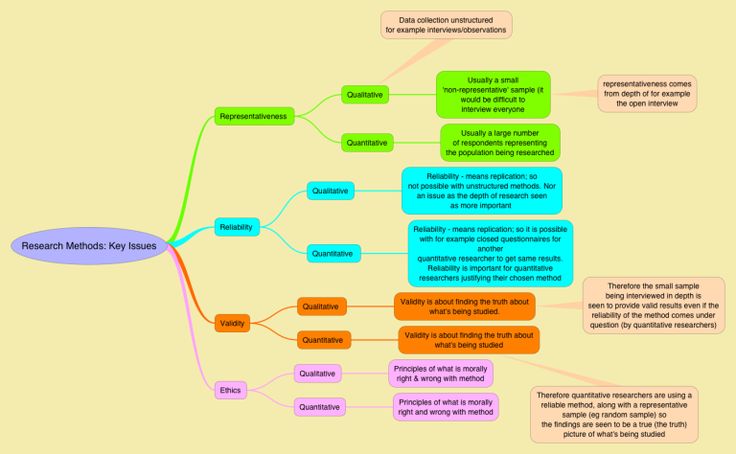
- Validity - this indicator indicates that the chosen methodology is justified and can be applied in real conditions.
- Reliability - means that the methods of psychological research used give the same results even with repeated repetition.
These are the requirements that official science imposes on all methods of research, including psychological research.
In higher educational institutions of psychology, students write term papers and theses, each of which must contain its own methodological base. To create it, you need to understand what research methods are used in psychology.
Classification of research methods in psychology
Modern psychological science uses many methods to classify research methods. We will consider one of the most popular, which includes four large groups:
- organizational methods;
- empirical methods;
- methods for processing data;
- interpretive methods.

Methods of psychological research: table
Before briefly understanding the individual research methods in psychology, let's see which methodologies are included in individual groups. To do this, we have compiled an understandable table of research methods in psychology:
| Organizational methods | Empirical methods | Quantitative and qualitative methods | Interpretation methods |
| comparative; | observational: observation and self-observation; | statistical analysis; | genetic; |
| longitudinal; | psychological experiment; | qualitative analysis. | structural: typology and classification. |
| complex. | psychodiagnostic: testing, questioning, conversation and so on; | ||
| praxis; | |||
| psychological modeling; | |||
biographical. |
By the way! For our readers there is now a 10% discount on any kind of work.
Scientific research uses different methods from each group. Their application depends on the goals and objectives and on certain stages of work on a course or diploma project. You can also use several methods of the same group. This helps to consider the subject of study from different angles and draw more informed conclusions.
Basic methods of psychological research: description and examples
It's time to understand what the methodologies from each group are, to characterize these methods of psychological research and give understandable examples of use.
Organizational research methods in psychology
Organizational methods are those methods that determine the form of scientific research in psychology. They belong to the general scientific and answer the question: how exactly will the study of psychological problems be carried out?
Comparative method
These are all methodologies based on the comparison of different groups of people or psychological phenomena. They can be compared according to different indicators:
They can be compared according to different indicators:
- development of people at different age stages;
- ability to cope with difficulties;
- reactions to certain circumstances and so on.
The comparative method is also called the cross section method. This means that it is applied one-time to get indicators that are specific to the moment. Such methods are more often used for socio-psychological research of a person and large groups.
Example: comparing the psychological stability of men and women in stressful situations.
Longitudinal method
In contrast to the comparative method, the longitudinal method assumes a certain duration in time. Most often, such techniques are used to study personality in psychology in order to see dynamic changes.
The main difficulty of this methodology is to organize continuous monitoring of the object, which will last for several years. Questions also arise with the purity of the experiment - too many factors can affect the final result.
Example: the role of school education in the upbringing of children
The longest psychological experiment lasted 75 years! Scientists at Harvard University during this time observed a group of 724 people, which included both people from wealthy families and residents from disadvantaged areas. The purpose of the study is to understand what determines health and happiness. The conclusion turned out to be unexpected - the most important stimulus in life is close relationships with others.
Complex method
This is an interdisciplinary research method that helps to study a person and his psychological characteristics from different angles. For example, with psychological and biological.
Example: moral development and choice of value orientations in adolescence and youth.
Empirical research methods in psychology
Empirical research methods are direct practical methods by which the desired psychological indicators are obtained. They answer the question: what tool to use for research?
They answer the question: what tool to use for research?
There are quite a few of them, so let's look at those that are most often found in course and diploma papers in psychology.
Observation is one of the main methods of research in psychologyObservational methods
Observation is the main method of psychological research. It is considered one of the most ancient. Observation as a methodology is used in almost all scientific papers. However, not independently, but in conjunction with other empirical methods. This is because pure observation is not very objective.
In order to reduce the level of errors, certain criteria are usually established within which the observation is carried out.
Example: observing the behavior of adolescents in a new team.
In addition to classical observation, the self-observation method is used. It allows you to track your own reactions to external stimuli and increase the level of control.
Method of psychological experiment
Method of psychological experiment is one of the main methods of psychological research. This is an experiment in which the experimenter creates certain conditions and checks how the subjects will react.
There are several types of experiments:
- laboratory - the conditions are completely controlled by the researcher;
- natural - the study is carried out under normal conditions;
- explicit - participants know that they are participating in the experiment;
- hidden - participants do not realize that they are participating in the experience.
Example: As an example, we can cite the famous “Third Wave” experiment, which was conducted by an American teacher in a regular school. He showed how obedient students can turn into real fascists in a week.
Psychodiagnostic methods
Psychodiagnostic methods are psychological research methods aimed at diagnosing the psychological characteristics of a person and individual groups.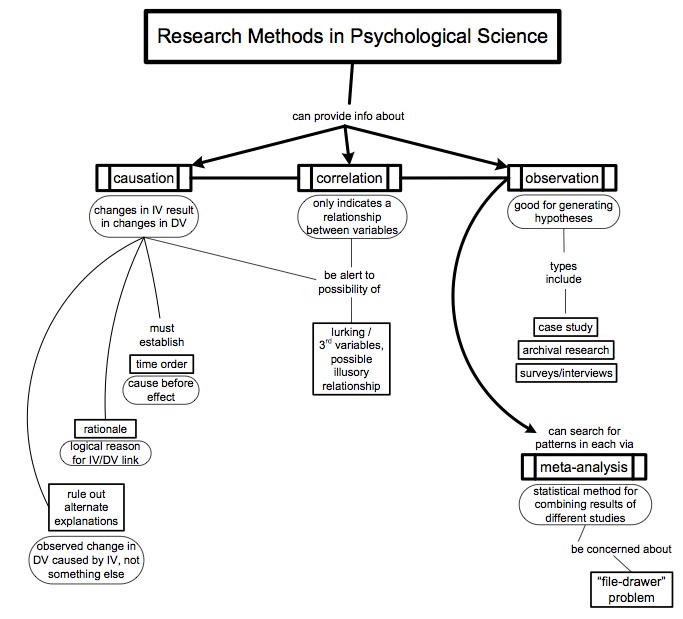
There are many varieties of psychodiagnostic methods:
- psychological testing;
- questioning;
- surveys;
- interviews;
- conversation;
- projective techniques.
Example: Various occupational tests that help determine people's professional inclinations.
Projective techniques are based on the projection method, when a person unconsciously transfers his own fears, values and desires to the surrounding objects. A striking example of this technique is Rorscharch inkblots.
Praximetric method
This is a method that is used to analyze the processes and results (products) of activities and draw conclusions based on this analysis.
This method is most often used in working with children of preschool and school age, examining their drawings or plasticine crafts. They are also used in historical experiments, studying the life and culture of ancient people.
They are also used in historical experiments, studying the life and culture of ancient people.
Example: study of the psychological state and self-esteem of children from drawings of a tree or a house.
Method of psychological modeling
When the object is not available for direct study, then the method of modeling is used. In psychology, it is also used when it is necessary to build a psychological model and explore its qualities.
The modeling method is used in works devoted to NLP. There they not only “remove” the behavioral patterns of successful people, but also teach them to others so that they achieve their goals faster.
Neuro-Linguistic Psychology, or NLP, is one of the psychological areas, the methods of which help a person to reveal his personality, improve communication skills, expand the boundaries of thinking and develop more successful programs.
Example: study the behavior of the best speakers, highlight the main characteristics and describe the psychological model of a successful speech.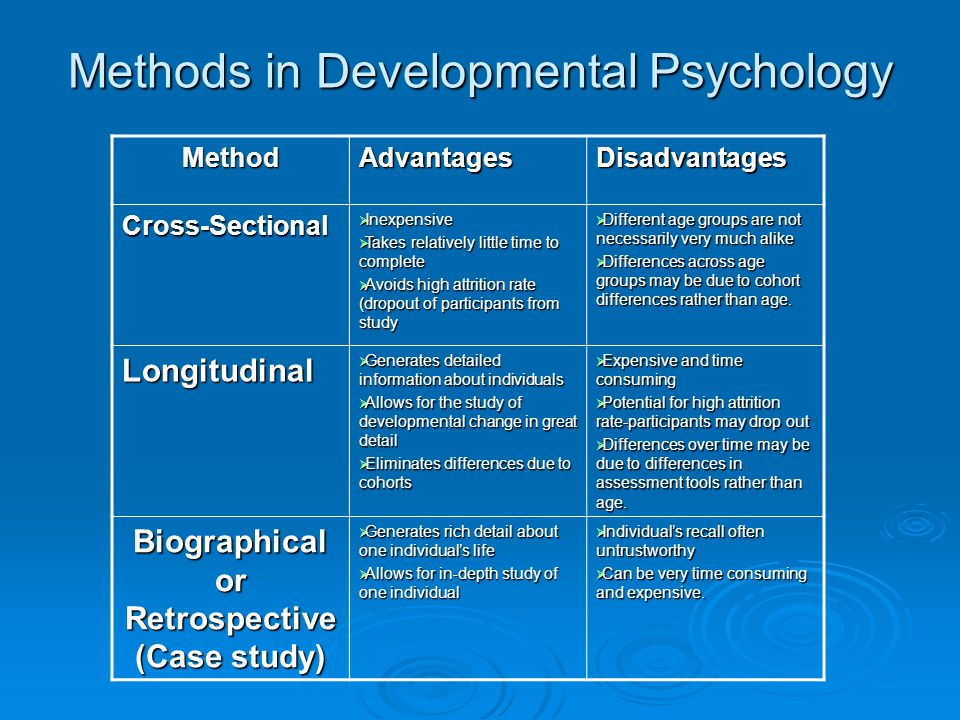
Biographical method
Another experimental method that deserves attention is the biographical one. It is based on the study of a person's life path, key situations that influenced his personality and development. Such diagnostics helps to correct human behavior, develop new reactions and improve life.
Example: the development of psychosomatic reactions in girls who were sexually abused in childhood.
This method can be used to study the psychological portrait of great people from different eras. For this, diary entries, memoirs, letters and other archival information are used.
Quantitative and qualitative methods of research in psychology
To organize psychological research, use organizational methods to conduct - empirical. And for data processing - methods of quantitative and qualitative analysis. Let's talk about the most common.
Statistical analysis method
The statistical or quantitative analysis method allows you to collect statistical data obtained during the study. On their basis, larger-scale phenomena are studied.
On their basis, larger-scale phenomena are studied.
Example: general statistics of people suffering from psycho-emotional disorders.
Qualitative analysis method
Unlike quantitative analysis, quantitative analysis does not count data. With its help, the obtained indicators are described, based on the necessary psychological characteristics. This analysis enhances the reliability of the study.
Example: the level of severity of psycho-emotional disorders with which people most often turn to psychologists.
Interpretive methods in psychology
And the last methods of psychological research, which no work can do without, are interpretative. This is the methodology on the basis of which conclusions will be drawn on the studied project.
Competently interpreting data is an important stage of workGenetic method
The genetic method involves a linear study of materials that will be based on time periods or important life stages of people. It is often used in longitudinal studies.
It is often used in longitudinal studies.
Structural methods
Structural methods focus on looking for unifying features, identifying common ground and systematizing. There are several varieties of such methods:
- typology;
- classification.
They are often used as the main methods of socio-psychological research of groups and communities.
Look at examples of work and make sure that we will help you honestly!
This is an impressive list. But now you know what methods to use to organize and conduct scientific research, as well as process and draw the right conclusions. And if you don’t have time to write a term paper or a diploma in psychology on your own, contact our student service.
Basic methods of psychology
- Material Information
- Psychodiagnostics
- Views: 61743
- Previous article Involving active questions
- Next article Professional psychological methods: MMPI, Szondi, Leary
Set font
- Size
- Style
- Reading mode
Psychology is a science that studies a person, his mental properties and behavior in various situations.
In psychology, there are several basic methods of human research that help a specialist to correctly assess the psychological state and draw appropriate conclusions:
- Observation;
- Experiment;
In addition, auxiliary methods are used in the study of human psychology, including:
- Interview with the patient;
- Testing;
- Study of the patient's background;
- Poll.
Consider in more detail http://www.psychologies.ru/ the main methods of psychology:
- Observation
The most common and effective method. It consists in the collection and study of scientific facts obtained by observing human behavior. In simple terms, a specialist contemplates a person without interfering with the situation. A distinction is made between short-term observation (according to the cross-sectional method) and long-term (longitudinal) observation.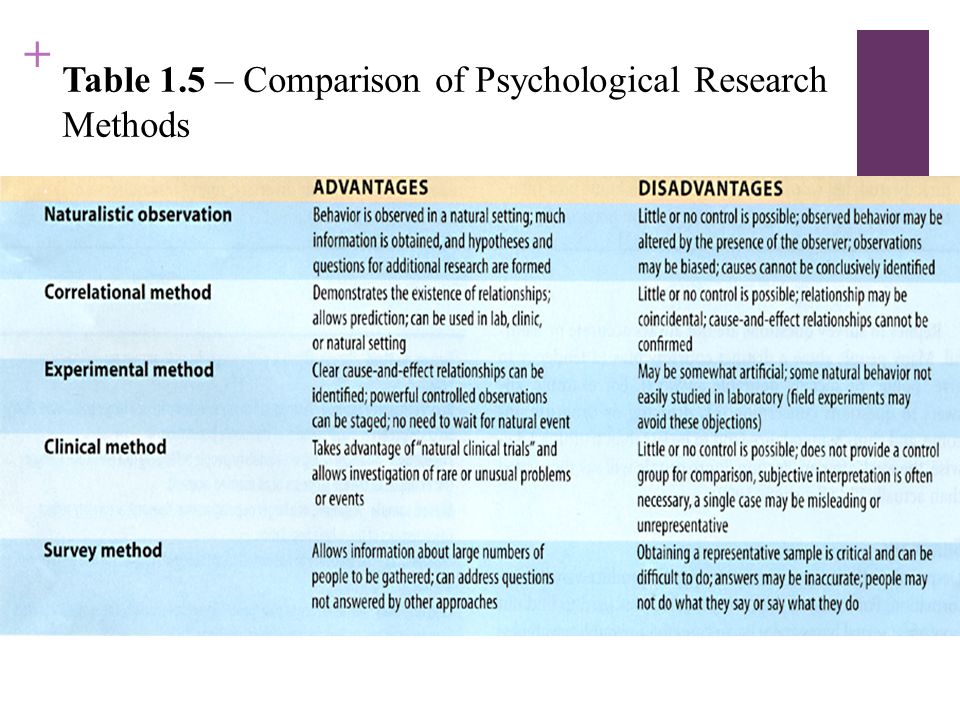 In this case, the psychologist can be in the role of a passive observer (according to the detached observation method) or actively participate in the life of the person being studied (according to the included observation method) or a group of people. This method is often used in preschool and educational institutions to study the behavior of children in a team (general observation). There is also selective observation, when only certain members of the team become the subject of study. The method of observation allows you to study the human psyche in different conditions and life situations (during play or work).
In this case, the psychologist can be in the role of a passive observer (according to the detached observation method) or actively participate in the life of the person being studied (according to the included observation method) or a group of people. This method is often used in preschool and educational institutions to study the behavior of children in a team (general observation). There is also selective observation, when only certain members of the team become the subject of study. The method of observation allows you to study the human psyche in different conditions and life situations (during play or work). - Features of observation
This method is used in situations where the researcher does not interfere in the process by observing the object of interest from the side. This allows you to get a more complete psychological picture of the person being studied. In practice, it is usually used under the condition that the object of interest is not aware of the presence of the observer, this allows the study of human behavior in natural conditions.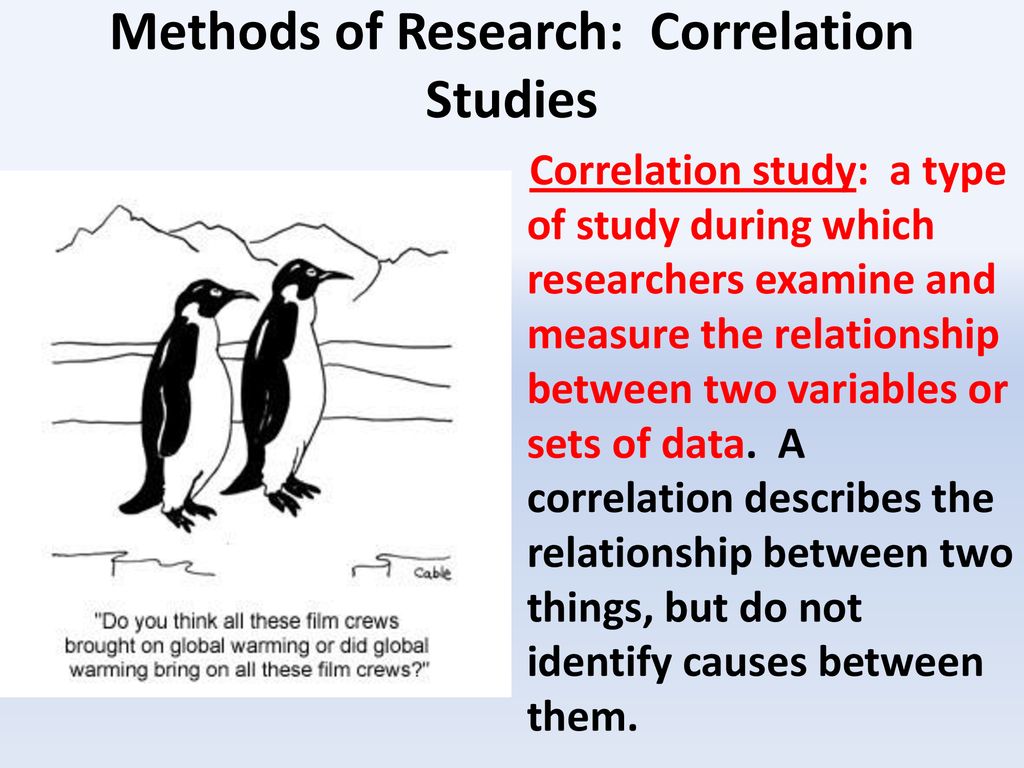
- Experiment
It is a more effective method of the human psyche, it gives more information and an extended picture of behavior in certain conditions. It consists in the fact that the specialist creates certain conditions that allow the subject of research to better express itself.
There are several varieties of the method:
- Laboratory - the study is carried out in the conditions of psychological laboratories equipped with special equipment. The disadvantage of this method is that the subject knows about the experiment, which can cause tension in behavior and reactions to external stimuli that are not characteristic of him;
- Natural - the study takes place in natural conditions for the study, while he should not know about the experiment. This allows you to see the behavior of a person in a familiar, calm environment. The natural research method is more effective and informative than the laboratory one. Quite often, psychologists practice speaking in front of a group of people while observing their reactions.




